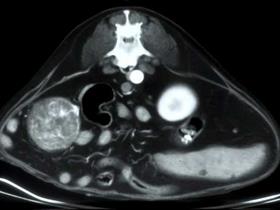

Nearly all cell membranes are permeable to NH 3 (but see Singh et al. Ammonium has a pK a of ∼9.2 in water ( Sillén 1964) so that at physiological pH (in the range 6.5–7.5) a fraction in the order of 1% is in the neutral NH 3 form.

Uptake of ammonium into cells can be monitored continuously, but indirectly, by measuring the changes in intracellular pH (pH i) that it causes. We conclude that this transporter is functionally selective for NH 4 + over K + and that the transporter molecule probably has a greater affinity for NH 4 + than for K +. A simple standard model of the transport process satisfactorily described the pH i changes caused by various experimental manipulations when the transporter bound NH 4 + with greater affinity than K +. The inhibition of NH 4 + flux by extracellular K + appeared to be competitive, with an apparent K i of ∼15 mM. This flux saturated with increasing o the relation was fitted with a Michaelis-Menten equation with K m ≈ 7 mM. A numerical model was used to deduce the NH 4 + flux through the transporter that would account for the pH i changes induced by a 30-s application of ammonium. Membrane permeability to NH 3 was 13 μm s −1. Regulatory mechanisms tended to restore intracellular after its displacement with a time constant of 3 min. Intracellular pH buffering power was found to be 12 mM.

To estimate transmembrane fluxes of NH 4 +, it was necessary to measure several parameters. These changes in pH i result from transmembrane fluxes not only of NH 4 +, but also of NH 3. To see if the NH 4 +-Cl − cotransporter on bee retinal glial cells is selective for NH 4 + over K + we measured ammonium-induced changes in intracellular pH (pH i) in isolated bundles of glial cells using a fluorescent indicator. Transmembrane transport of NH 4 + has been described previously on transporters on which NH 4 + replaces K +, or, more rarely, Na + or H +, but no transport system in animal cells has been shown to be selective for NH 4 + over these other ions. In bee retinal glial cells, NH 4 +/NH 3 uptake is at least partly by chloride-dependant transport of the ionic form NH 4 +. There appears to be a flux of ammonium (NH 4 +/NH 3) from neurons to glial cells in most nervous tissues.


 0 kommentar(er)
0 kommentar(er)
